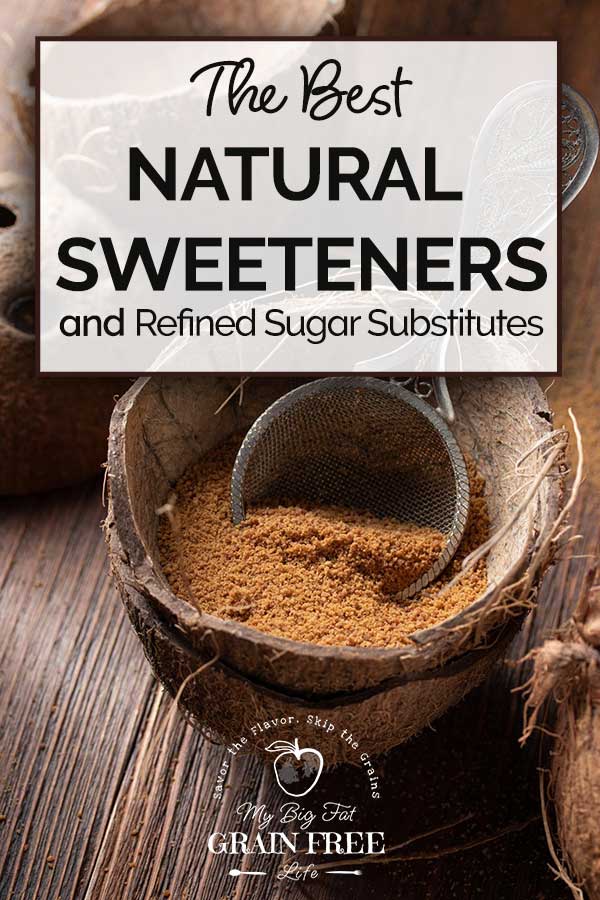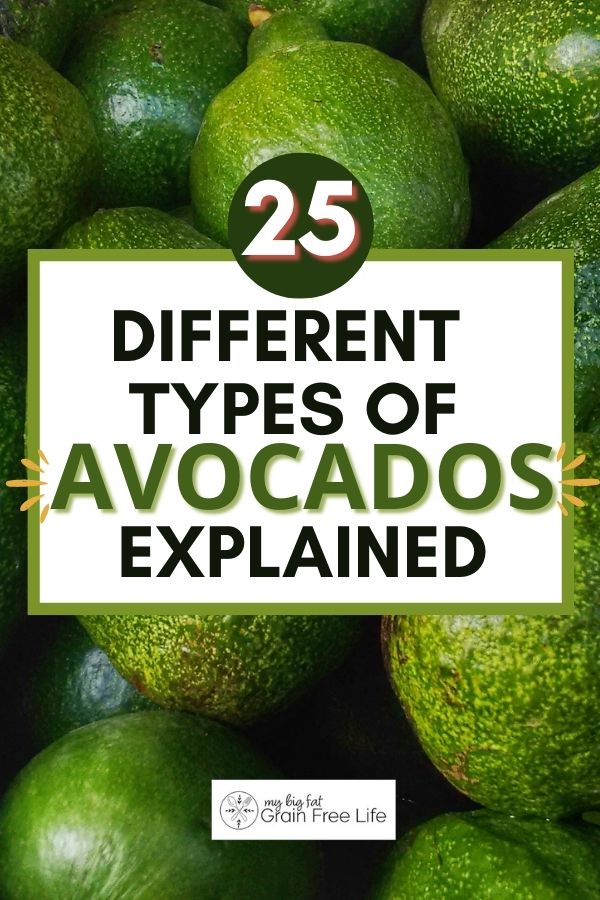Low Starch Root Vegetables Guide for a Low-Carb Diet
This post may contain affiliate links. If you make purchase after clicking a link, I may receive a commission at no extra cost to you.
Last Updated on January 19, 2024
Learn about all the low starch root vegetables that you can enjoy if you are watching your carbs. These great additions to your diet can help boost your nutrient intake.
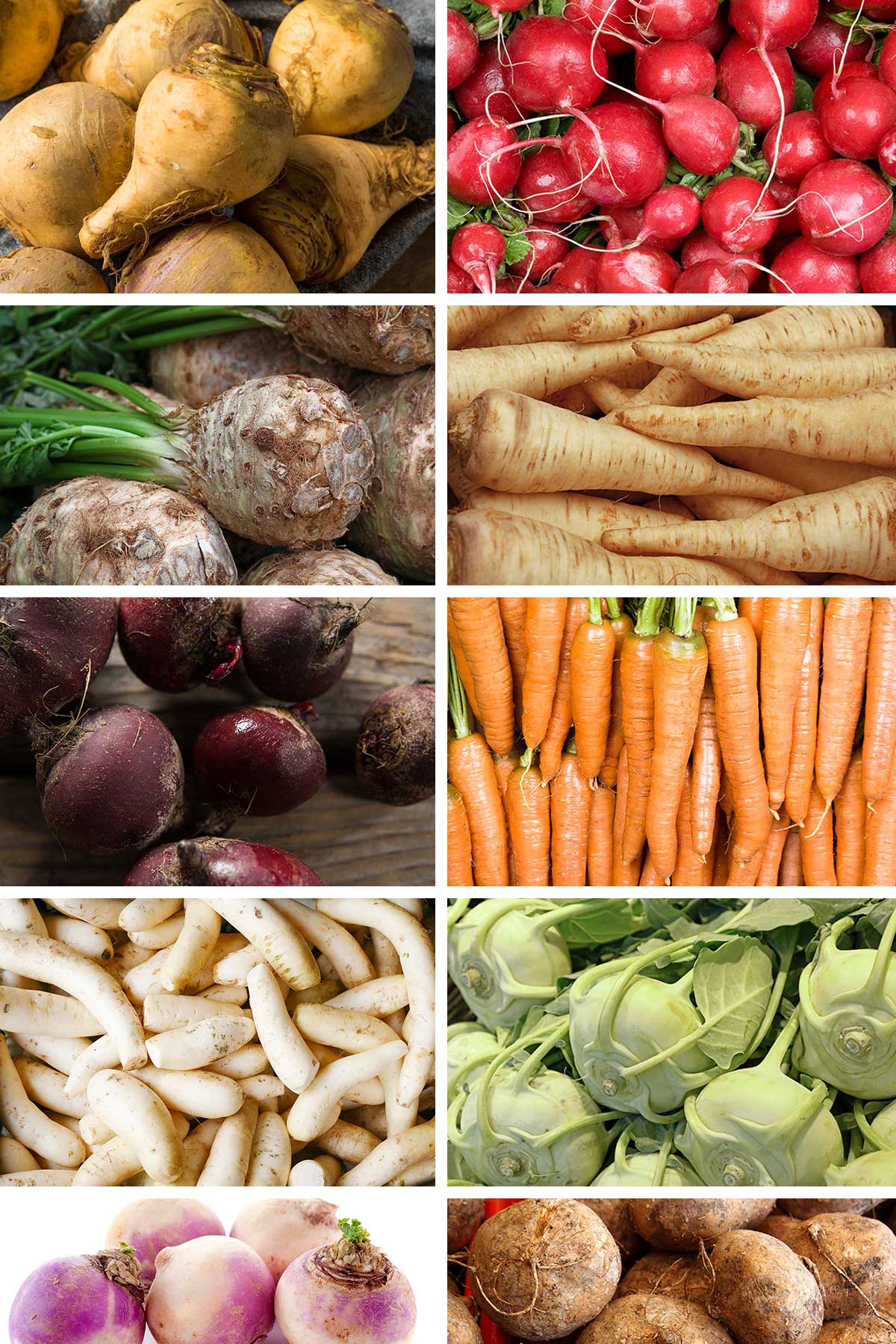
Non-starchy Vegetables
Low-carbohydrate diets can be confusing when it comes to vegetables, especially root veggies. Many vegetable choices have a high carb content. While there are many health benefits of eating fresh vegetables, it’s good to know what your low-carb options are.
Non-starchy vegetables can typically be classified into three main categories:
- Green leafy vegetables such as spinach, kale, chard, and lettuces
- Cruciferous vegetables including broccoli, cauliflower, bok choy, cabbage, and others
- Allium vegetables like onions, garlic, and leeks
- Some root vegetables are low in starch; see the list of low-starch root vegetables below.
Low Starch Root Vegetables
The following low carb vegetables are low in starch content and are good choices for those on low-carbohydrate diets or a ketogenic diet. If you want to increase your vegetable intake and are avoiding higher-carb vegetables, these low-starch root vegetables are a great addition to your daily diet.

Beetroot
Beetroot is a nutritious root vegetable known for its deep purple color. It is rich in antioxidants and essential nutrients like folate and iron, making it a great addition to a healthy diet.
- Appearance: These low-carb vegetables have a round shape with a deep red or purple color. It has smooth skin and green leafy tops. There are many health benefits of beetroot leaves, so don’t toss the green leafy tops!
- Taste: Beetroot has a sweet and earthy flavor with a slight hint of bitterness.
- Nutritional Information: Beetroot is rich in vitamins A, C, and K. It also contains minerals like potassium, manganese, and folate. Additionally, it is high in antioxidants and dietary fiber. It has moderate carbs content and a low glycemic index.
- Carbs: Approximately 17 grams of carbohydrates per 100 grams
- Fiber: 2.8 grams of fiber per 100 grams
- Glycemic Index: Moderate (64)

Turnips
Turnips are a versatile vegetable with a slightly sweet and peppery flavor. They are low in calories and packed with fiber, vitamins, and minerals. Turnips can be enjoyed roasted, mashed, or added to soups and stews.
- Appearance: Turnips have a bulbous shape with white or purple skin. They have leafy greens on top.
- Taste: Turnips have a slightly bitter and peppery taste when raw but become sweeter when cooked.
- Nutritional Information: Turnips are a great source of vitamins C and K. They also provide minerals like potassium, calcium, and magnesium. They are low in calories and carbohydrates, making them a great option for those watching their carb intake.
- Carbs: Approximately 6 grams of carbs per 100 grams
- Fiber: 1.8 grams of fiber per 100 grams
- Glycemic Index: Low (only around 5)

Rutabaga
Rutabaga, also known as swede or yellow turnip, is a root vegetable that has a mild flavor and creamy texture. It is an excellent source of vitamin C, fiber, and potassium. Rutabaga can be boiled, roasted, or mashed for a delicious side dish.
- Appearance: Rutabagas have a large round shape with yellowish-brown skin. They resemble turnips but are larger in size.
- Taste: Rutabagas have a mild and sweet flavor similar to that of turnips but with a slight cabbage-like undertone.
- Nutritional Information: Rutabagas are rich in vitamin C and contain minerals like potassium, calcium, and phosphorus. They are low in calories and carbohydrates while providing dietary fiber.
- Carbs: Approximately 8 grams per 100 grams
- Fiber: 1.8 grams of fiber per 100 grams
- Glycemic Index: Low (around 33-35)
Also see: Rutabaga Vs Turnip

Radishes
Radishes are crunchy root vegetables that come in various colors and sizes. They are low in calories and high in vitamin C and other antioxidants. You can add radishes and radish sprouts to salads for a refreshing crunch.
- Appearance: Radishes come in various shapes (round or elongated) with different colors such as red, pink, white, or black.
- Taste: Radishes have a crisp texture with a spicy or peppery flavor.
- Nutritional Information: Radishes are low in calories and carbs. They are a good source of vitamin C and contain minerals like potassium and calcium. They also provide antioxidants and dietary fiber.
- Carbs: Approximately 4 grams per 100 grams
- Fiber: 1.6 grams of fiber per 100 grams
- Glycemic Index: Low (15-20)

Celeriac
Celeriac, also called celery root, is a knobby vegetable with a mild celery-like taste. It is high in fiber, vitamin K, phosphorus, and potassium. Celeriac can be roasted, mashed, or used as a flavorful addition to soups and stews.
- Appearance: Celeriac has a knobby, irregular shape with a rough, brownish skin.
- Taste: Celeriac has a mild celery-like flavor with a hint of nuttiness.
- Nutritional Information: Celeriac is rich in vitamins C and K. It provides minerals like phosphorus, potassium, and magnesium. It is low in calories and carbohydrates while being a good source of dietary fiber.
- Carbs: Approximately 9 grams per 100 grams
- Fiber: 2.8 grams of fiber per 100 grams
- Glycemic Index: Low (only around 10)
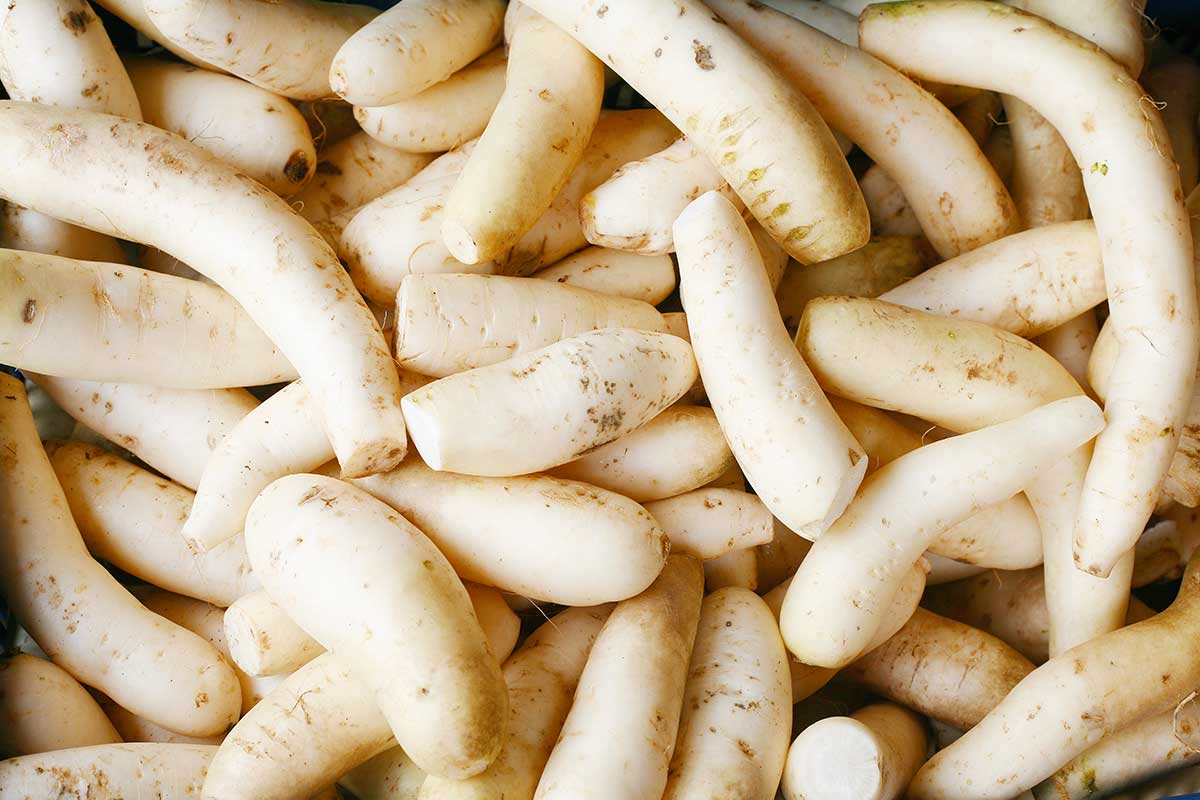
Daikon
Daikon is a long white radish commonly used in Asian cuisine. It has a crisp texture and mild flavor. Daikon is low in calories but rich in vitamin C and other beneficial compounds. It can be sliced raw for salads or cooked in stir-fries.
- Appearance: Daikon is a large white radish with an elongated shape.
- Taste: Daikon has a milder and less spicy taste compared to regular radishes.
- Nutritional Information: Daikon is low in calories and carbs. It contains vitamin C, as well as minerals like potassium and calcium. It is also high in dietary fiber.
- Carbs: Approximately 4 grams per 100 grams
- Fiber: 0.9 grams of fiber per 100 grams
- Glycemic Index: Low (around 20-30)
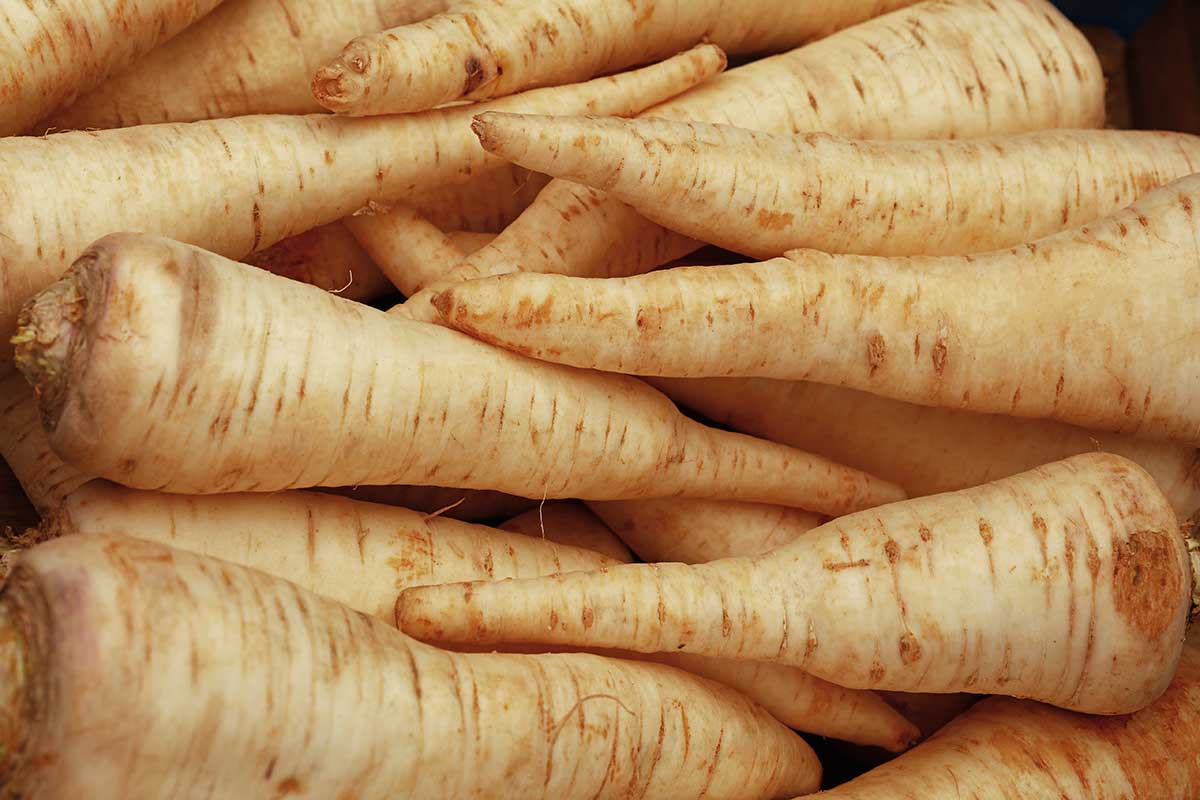
Parsnip
Parsnip is a root vegetable similar to carrots but with a sweeter taste. It is packed with fiber, potassium, folate, and vitamin C. Parsnips can be roasted or boiled for a delicious side dish or pureed into soups.
- Appearance: Parsnips resemble carrots but have a paler color and a tapered shape.
- Taste: Parsnips have a sweet and earthy flavor similar to that of carrots but with a slightly nutty undertone.
- Nutritional Information: Parsnips are rich in vitamins C, K, and E. They provide minerals like potassium, manganese, and magnesium. They are moderate in calories and carbohydrates while being high in dietary fiber.
- Carbs: Approximately 18 grams per 100 grams
- Fiber: 4.9 grams of fiber per 100 grams
- Glycemic Index: Moderate (around 97)
You might also enjoy: Butternut Squash and Parsnip Soup

Carrots
Carrots are well-known for their bold orange color and sweet taste. They are an excellent source of beta-carotene, fiber, vitamin K, and potassium. They can be enjoyed raw as a snack, roasted, or added to soups and stews.
- Appearance: They have an elongated shape and come in various colors (orange, yellow, purple)
- Taste: Carrots have a sweet flavor with a crunchy texture.
- Nutritional Information: Carrots are rich in beneficial vitamins – vitamin A (in the form of beta-carotene) along with vitamins K, B6, and biotin. They also provide minerals like potassium and manganese. Carrots are moderate in calories and carbohydrates while being high in dietary fiber.
- Carbs: Approximately 10 grams per 100 grams (raw carrots are generally lower in carbs and starch than cooked carrots.)
- Fiber: 2.8 grams of fiber per 100 grams
- Glycemic Index: Moderate (around 39-49)
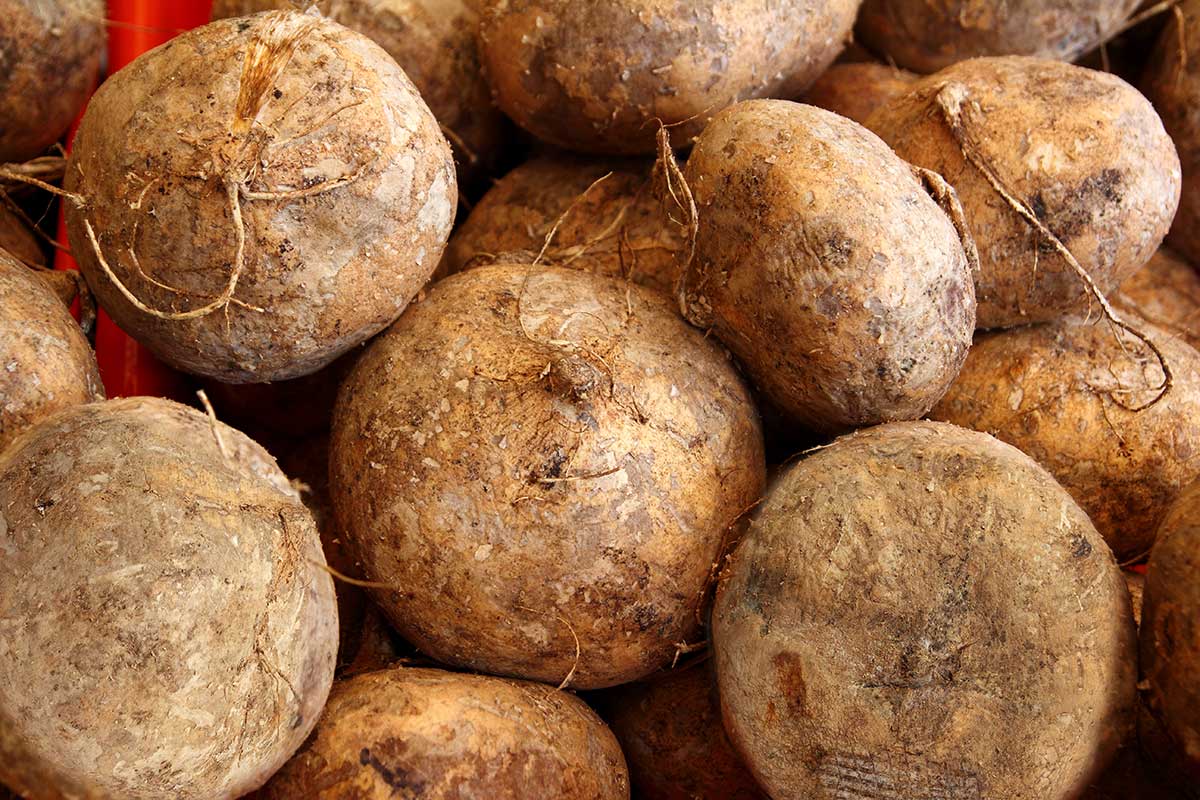
Jicama
Jicama is a root vegetable native to Mexico with a crisp texture similar to water chestnuts. It has a slightly sweet and nutty flavor. Jicama is low in calories but high in fiber and vitamin C. It can be sliced raw for salads or used as a crunchy addition to stir-fries.
- Appearance: The shape of jicama is round with tan-colored skin.
- Taste: It has a crisp texture similar to that of an apple and a mild, slightly sweet flavor.
- Nutritional Information: Jicama is low in calories and carbs. It contains vitamin C, as well as minerals like potassium and magnesium. It is also high in dietary fiber.
- Carbs: Approximately 9 grams per 100 grams
- Fiber: 3.6 grams of fiber per 100 grams
- Glycemic Index: Low (around 15)
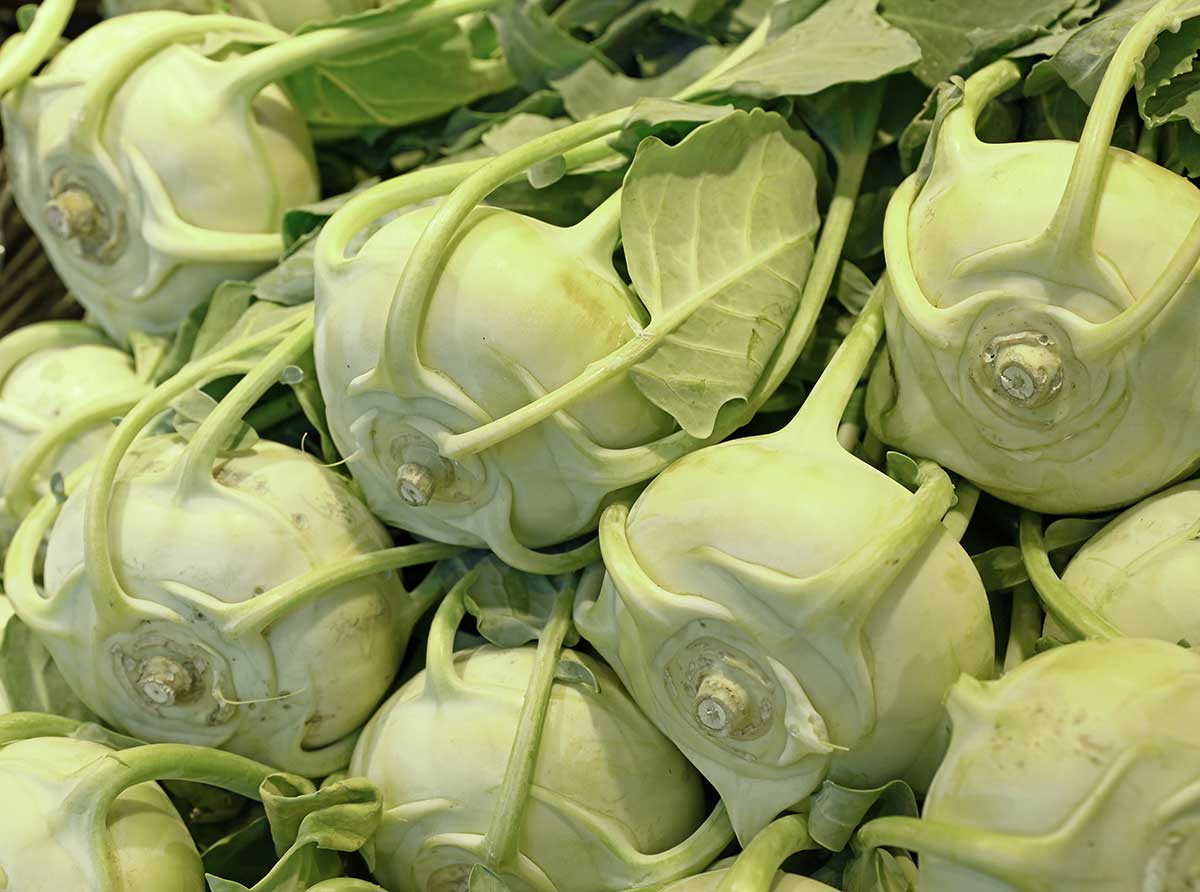
Kohlrabi
Kohlrabi is a unique-looking vegetable with a bulbous stem and leafy greens on top. It has a mild, slightly sweet taste reminiscent of broccoli stems or cabbage hearts. It is rich in fiber, vitamin C, and potassium. It can be eaten raw or cooked in various dishes like salads or stir-fries.
- Appearance: Kohlrabi has a round shape with pale green or purple skin.
- Taste: It has a crunchy texture with a mild, slightly sweet flavor reminiscent of both cabbage and broccoli stems.
- Nutritional Information: Rich in vitamins C and B6, it also provides minerals like potassium, calcium, and magnesium. It is low in calories and carbohydrates while having a high fiber content.
- Carbs: Approximately 7 grams per 100 grams
- Fiber: 3.6 grams of fiber per 100 grams
- Glycemic Index: Low (around 25)
Reasons to Eat Low-Starch Vegetables
Low starch root vegetables offer several compelling reasons to include them in your diet. Here are the top benefits of consuming these nutritious veggies:
- Weight management: Low starch root vegetables, such as carrots, turnips, and radishes, are lower in calories and carbohydrates compared to high starch varieties like potatoes or yams. Including them in your meals can help you maintain a healthy weight or even support weight loss goals.
- Blood sugar control: Low starch root vegetables have a lower glycemic index, meaning they cause a slower and more gradual rise in blood sugar levels compared to high starch options. This makes them an excellent choice for individuals with diabetes or those looking to manage their blood sugar levels.
- Fiber content: Root vegetables like parsnips and rutabagas are rich in dietary fiber. Fiber is essential for digestive health, as it aids in regular bowel movements, prevents constipation, and promotes overall gut health. Additionally, fiber helps you feel fuller for longer periods of time, which can assist with appetite control and weight management.
- Nutrient density: Low starch root vegetables are packed with essential vitamins and minerals such as vitamin C, potassium, folate, and antioxidants. These nutrients play vital roles in supporting the immune system, promoting healthy skin, maintaining proper nerve function, and reducing the risk of chronic diseases.
- Versatility in cooking: Low starch root vegetables can be prepared in various ways – roasted, steamed, grilled – making them versatile ingredients that add flavor and texture to your meals. They can be incorporated into soups, stews, salads or enjoyed as standalone side dishes.
Fresh Vs Frozen Low-starch Root Vegetables
If you are wondering about frozen vs fresh vegetables, among the low-starch root vegetables, the ones that freeze well are parsnips, carrots, and turnips. These vegetables have a firm texture and retain their taste and quality when frozen.
Are Root Vegetables Allowed on a Low-carb Diet?
In general, root vegetables tubers such as potatoes and sweet potatoes are typically not permitted on a low carb or keto diet. However, other root vegetables such as onions, jicama, radishes, turnips, rutabaga, and celery root are usually allowed.
Carrots fall into a slightly higher carb category and may be allowed on certain diets but not on stricter low carb diets.
Importance of High Fiber on a Low-Carb Diet
When following a low carb diet, it’s important to choose high fiber sources that are also low in net carbs (total carbs minus fiber).
Consuming foods that have a good amount of fiber are beneficial for a low carb diet because they provide essential nutrients while keeping carbohydrate intake in check. Fiber is a type of carbohydrate that the body cannot fully digest, so it does not contribute to the overall carb count as significantly as other types of carbs.
Advantages of Including High Fiber Foods in a Low Carb Diet
- Promotes satiety: High fiber foods tend to be more filling and can help you feel satisfied after meals. This can prevent overeating and support weight management goals.
- Regulates blood sugar levels: Fiber slows down the absorption of glucose into the bloodstream, which helps maintain stable blood sugar levels. This is particularly important for individuals with diabetes or those looking to manage their glucose levels and insulin response.
- Supports digestive health: Adequate fiber intake promotes regular bowel movements and helps prevent constipation. It also feeds the beneficial bacteria in your gut, supporting a healthy digestive system.
- Enhances heart health: High fiber diets have been associated with a reduced risk of heart disease by lowering cholesterol levels and blood pressure.
Final Thoughts
Eating low-carb root vegetables are a great addition to a healthy diet. By eating low starch root vegetables, you can aid weight management efforts, support blood sugar control, provide dietary fiber for digestive health, and deliver essential nutrients for overall well-being.
Consider using some of these low-starch root veggies to make soup if you are into souping!
Sources
- https://www.healthline.com/nutrition/foods/beetroot
- https://www.webmd.com/diet/health-benefits-radish
- https://www.healthline.com/nutrition/celeriac
- https://www.healthline.com/nutrition/parsnip
- https://www.webmd.com/diet/health-benefits-rutabaga
- https://www.webmd.com/diet/health-benefits-carrots
- https://www.healthline.com/nutrition/daikon-radish
- https://health.clevelandclinic.org/jicama-nutrition
- https://www.verywellfit.com/kohlrabi-nutrition-facts-4176112


